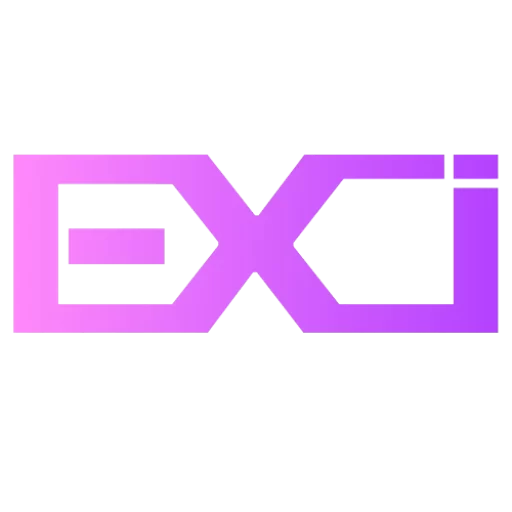Will AI Replace Teachers? We Found Out

Recently, the UK government has decided to invest £2 million in AI for classrooms to reduce teacher workloads, by designing lesson plans and quizzes.
This is stirring serious concerns and sparking debates as heated just like a high school rivalry game but why are we inculcating devices of guidance to replace the only source there should be? Our teachers?
Earlier, the introduction of AI scared off programmers and writers. Now, many speculate that AI is replacing the job of teachers, but that’s not the case! Yes, AI is expected to replace 85 million jobs worldwide by 2025, while creating 97 million new jobs in the same timeframe but the reality is much deeper and empowering.
Rather than imagining the AI as a job snatcher, picture it like your assistant who can personalize the learning experience, not just as a buzzword but a classroom reality.
‘Is AI ending the jobs of teachers’. Okay relax, we’ll find that out for you but the real question isn’t that. We wanna know how AI will serve as a refining machinery system to redefine education.
The Capabilities and Limitations of Artificial Intelligence
The foremost capability of AI in the education sector is its ability to offer personalized learning through adaptive learning experience—with AI tutors to teach subjects like mathematics that can be taught by Amy and Khan Academy with real time feedback and customized learning paths. AI can identify and analyze learning gaps rather than uh…punishing the students…
But here’s where things can become a halting point for learning; the point where emotional support is needed.
Now a human can only learn in a conducive and flourishing environment, where his freedom to learn will be appreciated and moralities will be induced.
Human interaction is vital for providing emotional support and to cater critical thinking as AI is fed with limited data and can only do much except twirl the algorithm to yield various outputs.
The Organisation for Economic Co-operation and Development (OECD) emphasizes the importance of teacher-student relationships, claiming that the pupils perform better when their teachers are supportive and encouraging.
This perspective aligns with the broader understanding that education thrives in an environment where personal growth is nurtured alongside intellectual development.
The capabilities of AI are:
- AI is a powerhouse for crunching big data fast.
- It spots trends and patterns that might slip by us
- It’s a champ at taking over the grunt work, so we work smarter, not harder
- It gets personal, tailoring recommendations by digging into the data
- It’s like having a crystal ball for making smarter choices, thanks to predictive analytics
- It’s the wizard behind chatbots and virtual assistants that get us
- It learns on the job, getting sharper with every piece of data
- It’s the tech behind recognizing faces and what’s being said out loud
The limits of AI are:
- It doesn’t get the nuances like we do, common sense isn’t its strong suit
- Garbage in, garbage out – it’s only as good as the data it munches on
- Don’t expect an AI to paint a masterpiece or write the next hit song – creativity’s not its thing
- If it’s learning from skewed data, it’s going to make skewed decisions
- Sometimes, how AI makes decisions is a mystery – it’s not great at showing its work
- It doesn’t run itself – it still needs us to keep it in check
- Setting up AI isn’t cheap, and it can be a complex beast
- It’s got a target on its back for hackers, and guarding data is key
AI as a Tool for Teachers Rather than a Replacement

There was always an assumption that AI will replace education and nowadays more and more educators view it as an assistant.
It provides teachers with an opportunity to customize instruction based on specific requirements of each learner, hence understanding the unique needs of every learner.
A teacher mentioned instructing students to “generate an assignment using ChatGPT to answer a prompt and critique that essay and make corrections using ChatGPT”
Automating administrative processes through AI will give time to educators for teaching since they engage in a lot of paperwork. But what’s more important is that students can dodge echo chambers (exposure to information, opinions, or beliefs that reinforce and perpetuate their existing views or biases) only in the presence of teachers.
Additionally, it enhances information which can be used in designing appropriate teaching techniques and outcomes.
With AI, teachers can make their environments more dynamic and efficient by providing assistance through technology rather than being replaced.
A student mentioned, “ChatGPT can provide features such as automatic scoring and speech recognition to help teachers better assess students’ learning outcomes and oral presentation skills.”
The Adaptability of AI to Different Learning Styles
1. Personalized Learning Paths
AI algorithms can create custom learning journeys by digging into each learner’s performance, likes, and how far they’ve come.
This means everyone gets a study plan that fits just right. Take someone who picks up concepts quickly—they’ll move on to tougher stuff without a hitch.
And if someone’s finding it tough, they get the extra help and easier work they need to catch up.
For example, imagine a coding platform that notices you’re acing HTML and CSS.
It might skip ahead to JavaScript, while someone else who’s stuck on loops in Python might get more exercises on that before they move on.
2. Adaptive learning
By using AI algorithms, it is possible to detect trends and patterns emerging from the students’ performance data.
In doing so, teachers can make wise decisions on the basis of such information.
For instance, if some lessons are difficult to understand by students, the teacher may change them.
It is possible for AI to indicate where students are excelling, as well as failing in their academic endeavors.
It enables course creators to customize the offered content to meet student needs.
Lesson planning
AI can help teachers create lesson plans, and presentations, write emails, and create checklists.
AI tools like ChatGPT, PlanifAI, and Teaching AI can generate structured lesson plans for teachers, as they save teachers’ time by providing a starting point for lesson planning and generating detailed content for each idea.
Time-saving: AI can automate or streamline time-consuming tasks such as generating progress reports, drafting emails to send to parents, grading assessments, and providing feedback, which allows teachers to have additional time with their students
This Isn’t Personalized Learning…
You sitting in front of a computer and asking GPT or Bard about your course outline or notes of your recent lectures isn’t personalized learning, it’s adaptive learning. If you want to learn more about ChatGPT and AI, these are the top-rated blogs that’ll make you a prompt pro.
Adaptive learning is algorithm-driven, with students progressing through a preset curriculum and AI adjusts to their skill levels based on their performance while personalized learning, on the other hand, is human-driven, focusing on the individual and may include technology as just a tool.
Adaptive learning is more about programmed tasks like digital worksheets targeting specific standards. Personalized learning is about authentic, real-world problem-solving and creative work.
In adaptive learning, students work alone and at their own pace. Personalized learning is collaborative, emphasizing interdependent work.
Assessment in adaptive learning is singular, quick, and efficient, providing immediate feedback for the AI to adjust future tasks. Personalized learning uses varied assessments, including self-reflection, peer, and teacher assessments, aiming to improve mastery of standards.
Adaptive learning is efficient and makes specific adjustments in real-time, while personalized learning can be messier and less predictable.
It’s designed for student engagement with limited choices and a closed system. Personalized learning is about learner agency, empowerment, and students owning their learning process.
Both adaptive and personalized learning can incorporate AI. In adaptive learning, AI drives the process, while in personalized learning, AI supports the human-driven process.
In personalized learning, chatbots might answer questions during inquiry, groups use AI for feedback, and teachers use generative AI for creating resources. However, humans remain central to personalized learning.
AI won’t replace teachers because teaching is about collaboration, relationships, curiosity, creativity, empathy, and understanding, which are inherently human attributes.
Is AI Ending the Jobs of Teachers?
So as I already answered, AI is not ending the jobs of teachers but it’s changing how they work. A classroom isn’t just a hub of teaching and learning or cramming a few books but it grooms you and encourages a more critical way of thinking.
You learn to socialize with empathy, respect, kindness, and teamwork to build your character. Not only are your habits shaped but you’re able to become more aware about different people, cultures and backgrounds to lead with integrity.
AI can merely handle grading and administrative tasks, freeing teachers for more student interaction to support personalized learning; that’s all!
Teachers’ roles are evolving into facilitators and mentors but yes job displacement in some areas may occur.
However, this will birth new chances as the demand for tech-savvy educators is growing. AI in education is more about augmentation, not replacement.






